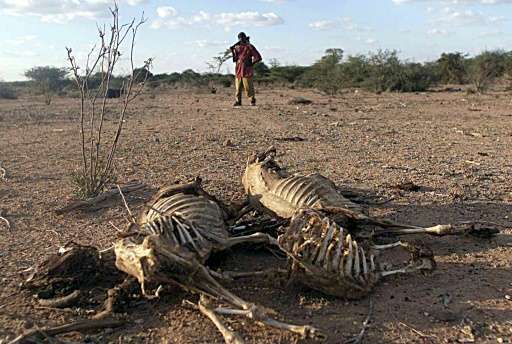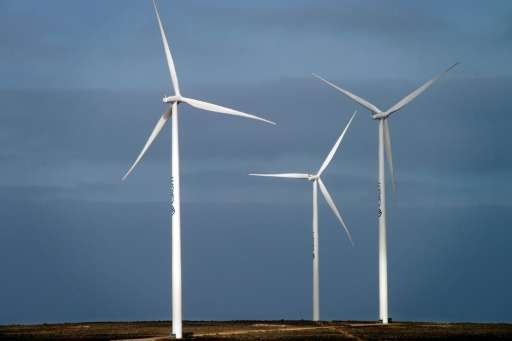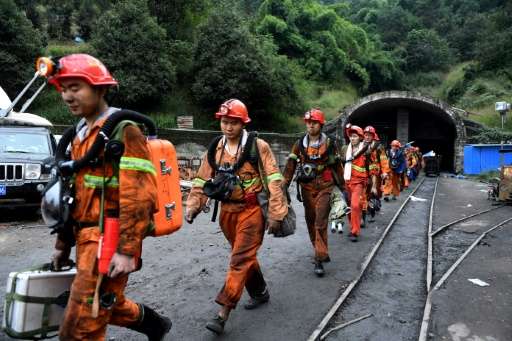Four nations map course to carbon-free economies

When it comes to purging fossil fuels from the global economy by mid-century—our only hope of staving off catastrophic climate change—it turns out that you can't get there from here without a good map.
That's the thinking behind detailed, long-term plans for switching from dirty to clean energy unveiled this week by the United States, Canada, Mexico and Germany at UN climate talks in Marrakesh.
Overcoming sharp internal debate, the German government led the way with sector-by-sector scenarios that would remove up to 95 percent of its CO2 emissions by 2050, compared to 1990 levels.
Green groups said there were too many sops to big business, but it was a world-first.
The "three amigos" of North America jointly-released their blueprints on Wednesday, with the 100-page US "mid-century strategy" for the globe's largest economy taking centre stage.
The US pledge to slash carbon-pollution by four-fifths from a 2005 benchmark dated from the chaotic 2009 Copenhagen climate summit, but had never been spelled out.
"The intent here is to think in the long term, not only in the short term," the Obama administration's top climate negotiator Jonathan Pershing told journalists ahead of the November 7-18 climate meet.
"At the moment, what we have from the world are commitments for 2025 or 2030, but we know that by 2050 we've got to have deep decarbonisation."

Those medium-term, national CO2 reduction pledges—annexed to the landmark 196-nation Paris Agreement, which went into force earlier this month—are not nearly enough to cap global warming at two degrees Celsius (3.6F) above pre-industrial era levels, the planet-saving goal set out in the treaty.
A fundamental change
The imperative for rich nations to stop burning fossil fuels within roughly four decades comes from the UN's top climate science authority, the Intergovernmental Panel for Climate Change (IPCC).
Emerging juggernauts such as China and India, whose economies are still powered in large measure by coal, would have to follow suit toward the end of the century, it says.
"That is a dramatic transformation, one that requires a fundamental change in our infrastructure—how we generate power, how we use it, what fuels we use, what vehicles we drive," said Jeffrey Sachs, a special adviser to UN chief Ban Ki-moon and director of the Sustainable Development Solutions Network.
"Because our infrastructure is so long-lasting, we have to start now to build that long-term transformation," he told AFP.
Indeed, the 2025 and 2030 targets not only fall short, they could—without a clear view of the long game—lead countries into making disastrous choices, experts say.

To fulfil the Paris pledges, for example, moving from highly-polluting coal-fired power plants to cleaner natural gas—a shift occurring in the United States and elsewhere—would seem to make sense.
But if the mid-century objective is a carbon-neutral economy, spending hundreds of billions of dollars on equipment ultimately incompatible with that goal does not.
"You have to start thinking about the investments that you are doing now in long-lived infrastructure that is going to continue to be operational in 2050 and beyond," said Jim Williams, director of the US Deep Decarbonization Pathways Project.
Ignorant and hostile noises
Likewise for vehicles.
Emissions from internal combustion engines can still be reduced, but the research and money needed for that may be better spent on improving electric and fuel-cell cars.
Three pillars of the US plan—energy efficiency, electrification and removing fossil fuels from electricity generation—were first detailed in the DDPP, a 16-nation effort that grew from a 2012 study in the journal Science laying out how the state of California could keep its pledge to cut greenhouse gas emissions 80 percent by 2050.

"Increasingly, that transformation is moving into the realm of market choice," said Williams, the lead author of the Science study.
Government clearly has a critical role to play, but in the United States, he added, most regulator decisions on energy take place at the state level.
Which means that even if US president-elect and avowed climate sceptic Donald Trump wanted to reverse the trend, he might not have the leverage.
"I don't expect California or a host of other states to slow down one iota because the federal government is making ignorant and hostile noises," Williams told AFP.
For the business sector, "long-term roadmaps" help provide certainty that governments are serious about moving to a low-carbon society, said Peter Baker, president and CEO of the World Business Council.
"That's when finance will start to flow to these investments," he said in Marrakesh.
So far, 25 nations have expressed their intent to formulate 2050 plans, including China and India, Pershing said.
© 2016 AFP





















